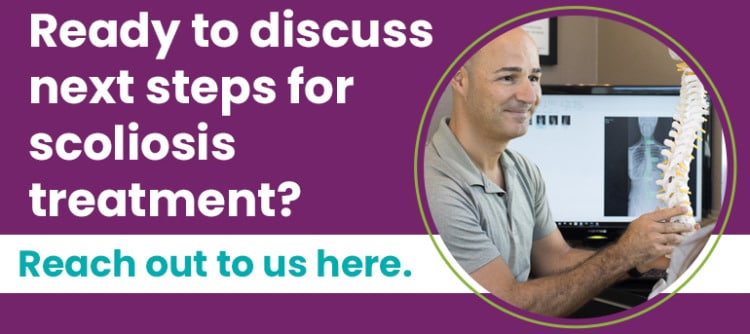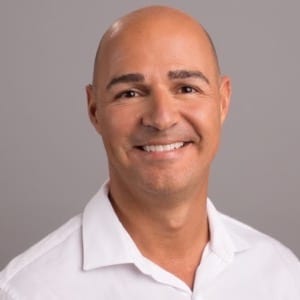What Is Scoliosis of the Spine? Definition and Overview
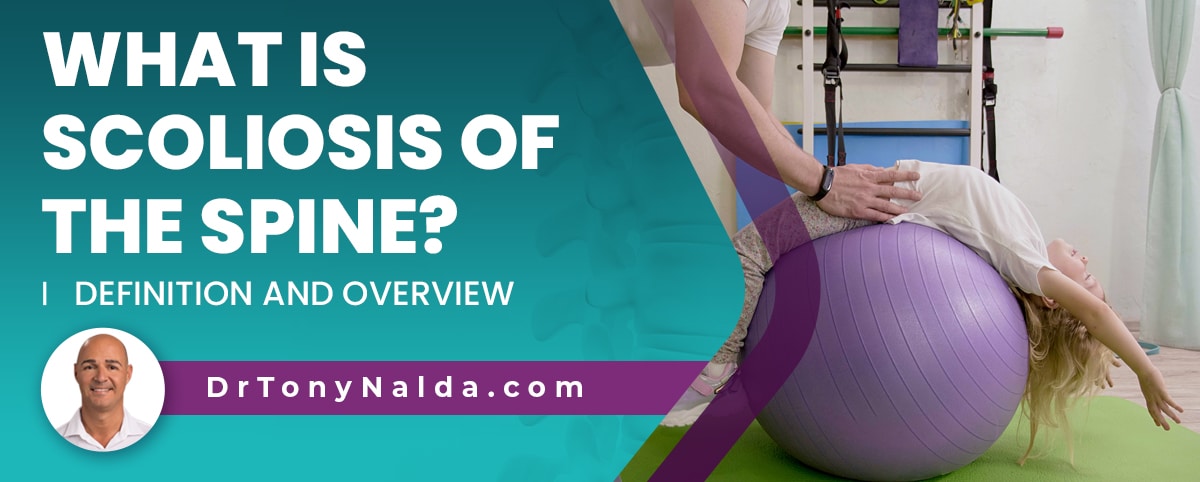
No two cases of scoliosis are the same because conditions range widely in severity, and in addition, there are also different types of scoliosis. Scoliosis can range from mild scoliosis to moderate scoliosis, severe and very severe scoliosis, and condition type is determined by causation.
Scoliosis of the spine is a condition that causes the spine to bend unnaturally to the side and rotate, making it a complex 3-dimensional condition. Scoliosis diagnosed early on can be highly treatable, but there are no treatment guarantees.
Let's start with defining scoliosis and how it's diagnosed.
Table of Contents
Defining Scoliosis
Scoliosis is a structural spinal condition that causes an unnatural lateral spinal curvature, and the condition's rotational component also makes the spine twist unnaturally.
Scoliosis is a serious condition that's progressive in nature, and it's growth that makes it progress; progression means the size of the unnatural spinal curvature is increasing, as are the condition's effects, and as this occurs, conditions are becoming more complex and difficult to treat.
Scoliosis can be highly treatable, particularly with early diagnosis and treatment, but as a progressive condition, treatment is about managing an ongoing condition.
Diagnosing Scoliosis
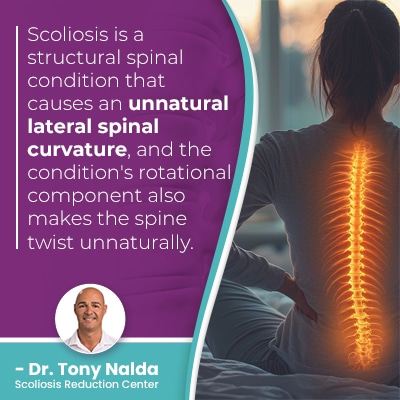 Diagnosing scoliosis isn't always easy; the signs of mild scoliosis can be subtle and difficult for anyone other than an expert to notice.
Diagnosing scoliosis isn't always easy; the signs of mild scoliosis can be subtle and difficult for anyone other than an expert to notice.
Mild scoliosis also isn't associated with noticeable functional deficits, but this can change over time as conditions progress and become more severe.
So where a scoliosis is at the time of diagnosis doesn't mean that's where it will stay, especially without a proactive treatment plan.
Diagnosing scoliosis involves a physical examination of the patient while they are bending forward (spine is most visible in this position), taking the patient's family history, and X-ray results.
An X-ray is needed to officially diagnose scoliosis by confirming the rotational component and the patient's Cobb angle measurement; the Cobb angle is determined during X-ray and indicates the size of the unnatural spinal curve, and condition severity is determined based on the measurement:
- Mild Scoliosis: Cobb angle measurement of between 10 and 25 degrees
- Moderate Scoliosis: Cobb angle measurements of between 25 and 40 degrees
- Severe Scoliosis: Cobb angle of 40+ degrees
- Very-Severe Scoliosis: Cobb angle of 80+ degrees
In order to be diagnosed as scoliosis, the spine has to bend unnaturally to the side, rotate, and have a minimum Cobb angle measurement of 10 degrees.
Part of diagnosing scoliosis involves further classifying conditions based on important variables, and treatment plans are shaped around these variables, one of which is condition type.
Different Types of Scoliosis
Condition type is determined by its underlying cause, and this has to shape the crafting and customization of effective treatment plans.
Addressing a condition's underlying cause is how to address its symptoms for long-term improvement, rather than merely addressing a condition's symptoms, but not the condition itself.
There are four main types of scoliosis with different characteristics and treatment needs.
The main type of scoliosis is idiopathic, and the remaining three types are considered atypical and are associated with known causes.
Idiopathic Scoliosis
Idiopathic scoliosis has no known cause; it's considered to be multifactorial: caused by a number of variables that can differ from one patient to the next.,
Idiopathic scoliosis is the main type to affect all ages, and the most prevalent type overall is adolescent idiopathic scoliosis diagnosed between the ages of 10 and reaching skeletal maturity.
Adolescents are the most at risk for rapid-phase progression because of the stage of puberty with its rapid and unpredictable growth spurts.
While we don't know what causes idiopathic scoliosis to develop initially, we know what makes it progress, and we know how to respond to a diagnosis with proactive treatment.
Idiopathic scoliosis accounts for approximately 80 percent of known cases, and the remaining 20 percent are associated with known causes: neuromuscular scoliosis, degenerative scoliosis, and congenital scoliosis.
Neuromuscular Scoliosis
Neuromuscular scoliosis is caused by the presence of a larger neuromuscular condition like spina bifida, muscular dystrophy, and cerebral palsy causing a disconnect between the brain, the spine, muscles and connective tissues that support the spine.
My neuromuscular scoliosis patients are among the most difficult to treat because the larger underlying neuromuscular condition has to be the focus of treatment.
In typical cases of idiopathic scoliosis, curves bend to the right, away from the heart, but in atypical cases with known causes, curves can bend to the left, towards the heart; when I see a left-bending curve on an X-ray, this is a red flag for that the condition is atypical and complex to treat.
Degenerative Scoliosis
Degenerative scoliosis affects adults over the age of 45, typically, and is caused by natural age-related spinal degeneration.
In most cases of degenerative changes, it's the spinal discs that are the first structures to experience changes.
A disc sits between adjacent vertebrae to provide cushioning, stability, flexibility, and when disc degeneration is occurring, it can become desiccated and change shape as a result; as adjacent vertebrae attach to the disc in between, this also affects the position of vertebral bodies and can cause them to shift out of alignment with the rest of the spine.
Degenerative scoliosis can be particularly painful as the spine becomes increasingly unbalanced and unstable.
Congenital Scoliosis
Congenital scoliosis is caused by spinal malformations that develop in utero, so babies are born with the condition.
This is a rare type of scoliosis affecting approximately 1 in 10,000.
Common spinal malformations include the failure of vertebrae to form into separate and distinct bones, instead becoming fused together, wedging forward unnaturally, and causing the spine to form abnormally.
In addition, vertebrae that form in a triangular shape can cause the spine to form out of alignment with an unnatural bend and twist.
How is Scoliosis of the Spine Treated?
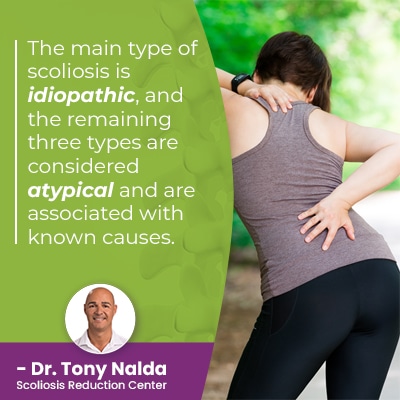 Scoliosis needs to be treated proactively, particularly childhood scoliosis as progression is triggered by growth.
Scoliosis needs to be treated proactively, particularly childhood scoliosis as progression is triggered by growth.
When it comes to progressive conditions like scoliosis, when treatment is started can be an important factor in treatment success; the sooner treatment is started, the better.
The more progression that occurs before treatment is started, the stiffer the spine will be, and the more pronounced and established its effects will be: making it more complex to treat.
With most progressive conditions, it's more effective to work towards preventing progression and increasing effects, than it is to attempt to reverse effects once they're established.
Proactive treatment needs to be applied early on to work towards counteracting the condition's progressive nature.
Conservative Treatment
Here at the Scoliosis Reduction Center®, patients benefit from a proactive non-surgical treatment approach that is innovative and integrative.
Conservative treatment combines the power of multiple scoliosis treatment disciplines for the best potential results: chiropractic care, physical therapy, scoliosis exercises, corrective bracing, and rehabilitation.
These disciplines work together to impact the condition on every level; chiropractic care works towards adjusting the position of the curve's most-tilted vertebrae and improving the spine's alignment, stability, and balance by reducing the size of the unnatural spinal curve.
Physical therapy and scoliosis exercises work together to improve posture, the spine's surrounding muscles balance and strength for more support and stability.
Corrective bracing can complement other forms of treatment by pushing the spine into a corrective position.
Rehabilitation is customized to hold results for the long-term and can involve continued chiropractic care and the prescription of scoliosis-specific exercises that patients can perform from home to further heal and stabilize the spine.
Conclusion
Scoliosis of the spine should always be taken seriously and treated proactively, and this is at the center of a conservative non-surgical treatment approach.
Conservative treatment is proactive because it's started as close to the time of diagnosis as possible and works towards preventing progression, increasing condition effects, and the need for future surgical intervention.
Spinal fusion surgery is part of a traditional treatment response, but many cases of scoliosis don't require surgery, particularly with early detection and intervention.
Scoliosis surgery is invasive and risky so should be considered carefully, and the results of conservative treatment speak for themselves.
When scoliosis treatment is started early, conditions are at their mildest and likely to be at their most responsive.
While early diagnosis and intervention doesn't guarantee treatment success, there is a direct correlation; even scoliosis diagnosed as mild can easily progress and become moderate, severe, and very severe, particularly in children who can progress quickly due to growth.
The most important thing to understand about scoliosis is that it's progressive so its nature is to get worse over time, hence the benefit of being proactive with treatment options.
Dr. Tony Nalda
DOCTOR OF CHIROPRACTIC
After receiving an undergraduate degree in psychology and his Doctorate of Chiropractic from Life University, Dr. Nalda settled in Celebration, Florida and proceeded to build one of Central Florida’s most successful chiropractic clinics.
His experience with patients suffering from scoliosis, and the confusion and frustration they faced, led him to seek a specialty in scoliosis care. In 2006 he completed his Intensive Care Certification from CLEAR Institute, a leading scoliosis educational and certification center.
About Dr. Tony Nalda
 Ready to explore scoliosis treatment? Contact Us Now
Ready to explore scoliosis treatment? Contact Us Now